Berlin public transport
Lord, I fell in love with Berlin! Acquaintance with the capital of Germany was swift and somewhat forced - I came alone, I have seen no one, and all I knew - the name and address of the hotel. The motto - no taxis. With the German language in my misfortune complete, there is no cash, and in the hands of the suitcases.

Berlin Bus
First contact with the information system took place at the airport. First, I have long studied the city map with public transit and searched for the right crossing the street, and then choose the best alternative move - the bus 109. Lucky route passed close to my hotel. Before leaving the terminal hangs here is the scoreboard, which is indicated on some stop and how long drive up buses. I had 6 minutes to buy a ticket.

I went to the side and saw the desired stop ticket machines. Fine. I opt for the English language and study the proposed options. Short drive - up to 6 stops on the bus or to 3 metro (1, 4 euros) and a common drive in one direction for two hours on any form of transport (2, 4 Euro). There are a variety of travel, but I did not read about them and chose the latter option.
Surprise! The machine does not accept my sberbankovskuyu of payment card. Swears in German. Shayse, I say, and go back to the terminal in search of an ATM. While I was shooting the money, my bus left. I had to wait another 11 minutes.
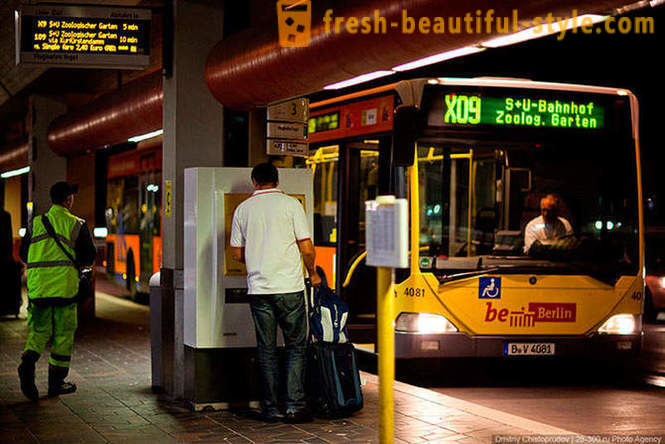
When entering the bus, I said in English at the driver, I shall reach to the desired stop me. The driver nodded. I dragged the bags, punched ticket and began to follow the stops.
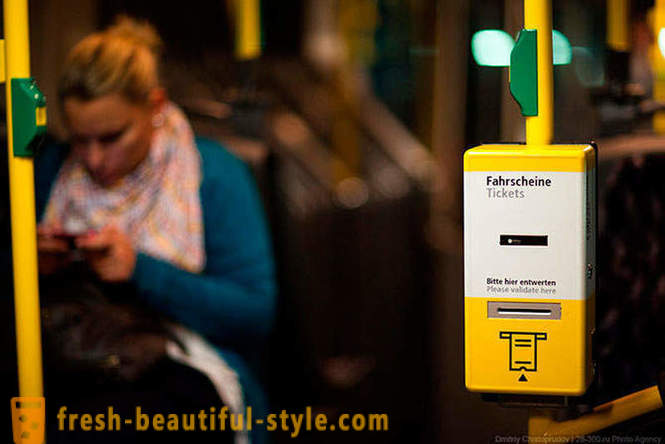
The road from the terminal to the hotel took 17 minutes of waiting, 15 minutes by bus and 7 minutes on foot. Magically!
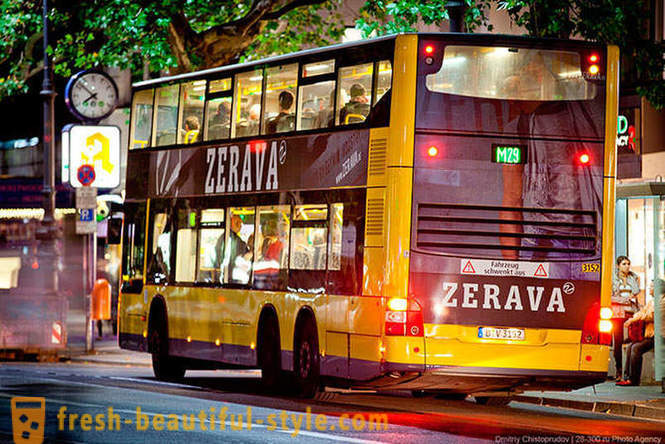
For all the time I did not see traffic jams in the city. Therefore, buses move was quite convenient, comfortable, and relatively quickly. Although I have not once seen as the driver of a double-decker obediently I went behind the cyclist and did not press him.

Berlin tram
Tram lines are preserved only in a part of Berlin, which was previously the capital of the German Democratic Republic, that is East Berlin. In the middle of the twentieth century, European countries are actively getting rid of as the tram from "outdated mode of transport" and West Berlin was not an exception.
Who walks the streets of Berlin are three types Trams: Tatra KT4D and two modern low-floor GT6N and Bombardier Flexity Berlin.
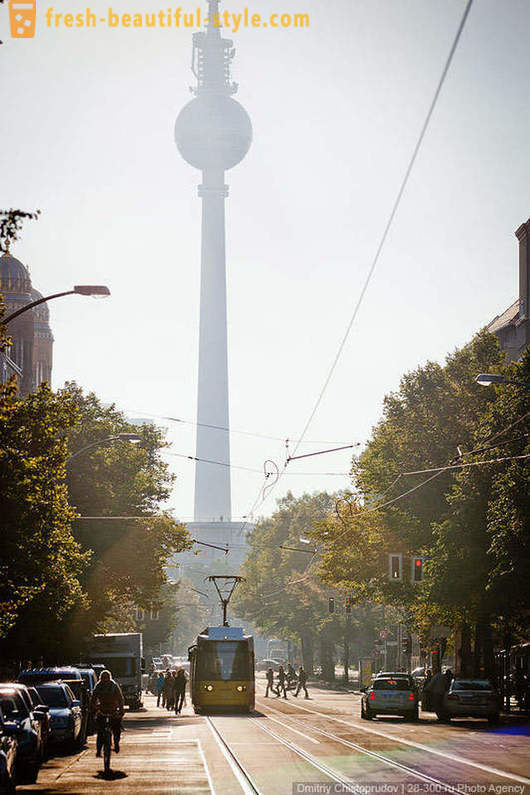
The first streetcars appeared in Berlin in 1865. To date, the city has 22 routes with a total length of 192 km. Czech cars Tatra KT4D (pictured) started to operate even in East Berlin in 1976 and run through the streets on this day.

In contrast to the bus, where the ticket can only be bought from the driver, the cabin trams vending machines Ticket. It's damn convenient. Also, tickets can be purchased from vending machines at bus stops. This rule applies to any form of public transport in Berlin.
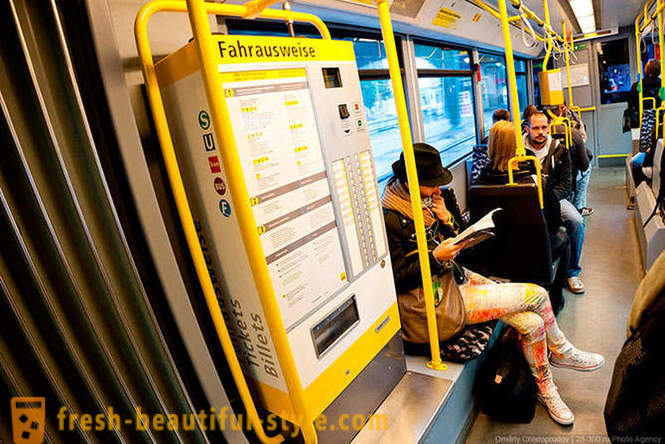
Trams are narrow and long. Compared with the Moscow tram - Berlin goes totally silent.
When I learned that with a pass to the exhibition, I can make free use of public transport, I spent hours riding around the city, replacing one form of transport to another.
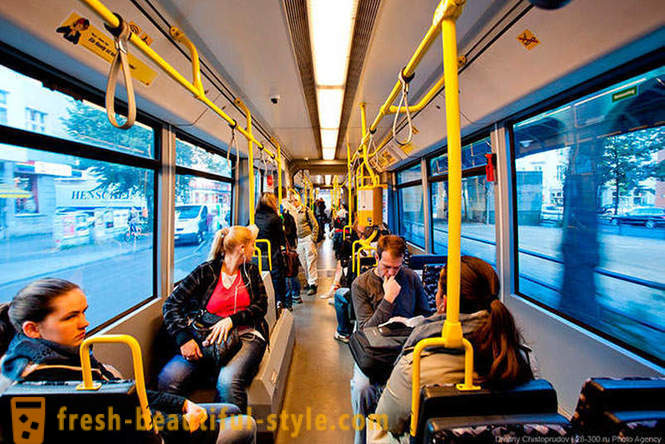
This is generally a song - how much more convenient to enter / exit the tram! The lumen is not greater than in the Moscow subway!
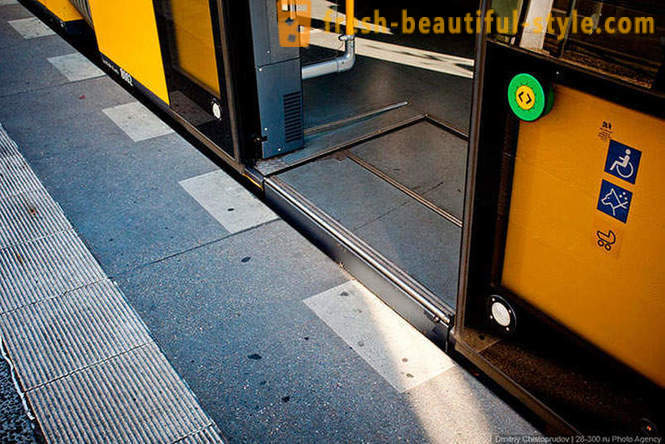
Berlin Metro
Underground subway is called the U-Bahn and is, together with the Berlin S-Bahn S-Bahn basis of the public transport of the capital. Berlin Metro - one of the oldest in the world and the oldest in Germany. At this point in the Berlin metro network 173 includes stations 10 and 151 lines long, 7 km. About 80% of tracks are underground.
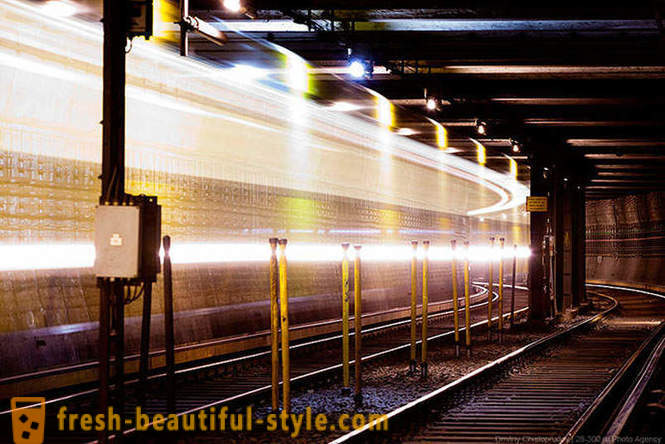
I could not immediately figure out what I do not like the local metro. Like all German comfortably and clearly, but something is wrong. Then I realized - the ceiling height. At all stations, where I stayed, the ceiling height in our subways. After our subway is very unusual. There is a feeling of tightness. Back in Berlin subway is much hotter than outside.
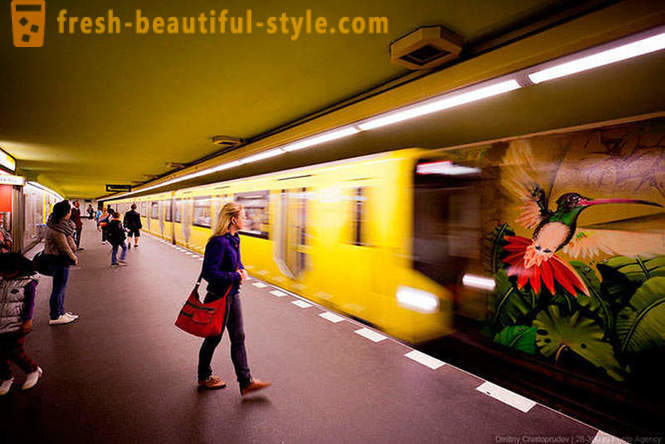
On the navigation no problems, at most stations equipped with electronic display indicating the waiting time until the next train and direction of travel. Even in the subway turnstiles and no grandmothers have escalators, but there is an urn!

In the car on the scoreboard displayed the name of the next station, which is duplicated voice message. Before closing the door sounds a special tone and red lights above the door are included.
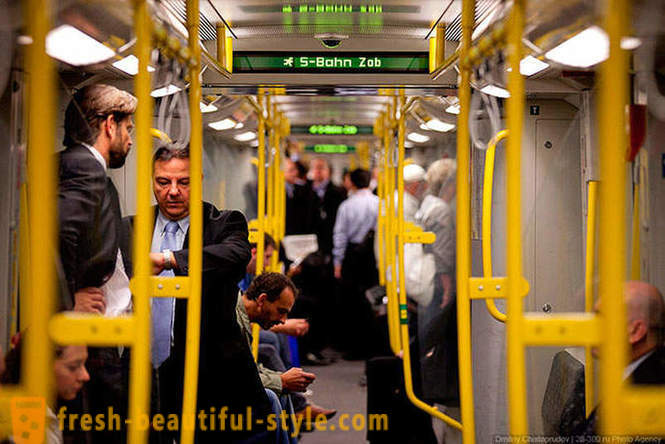
Metro scheme is attached to the ceiling! This is more convenient than our Moscow translucent option of applying to the window. The longest line is U7, its length is 32 km. She is the longest fully underground line in Germany.
In rush hour trains run a three- or four minute intervals between flights, other times every 5 or 10 minutes. Since night line (on all routes except the U4) on the night of Friday to Saturday have been introduced since 2003 and from Saturday to Sunday at 15-minute intervals. In the remaining days of the week on the subway routes run night buses every 15 minutes.
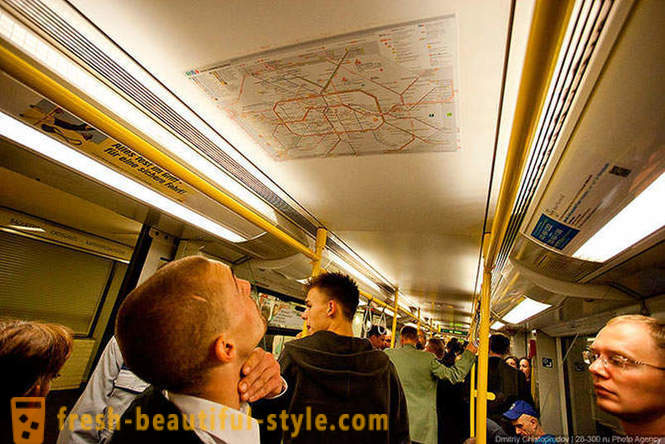
The typical station: passengers, branch name (U2), the direction of movement (up Pankow station), the name of the station (Bismarckstrasse), a pointer output with street names and the transition to the U7 branch.
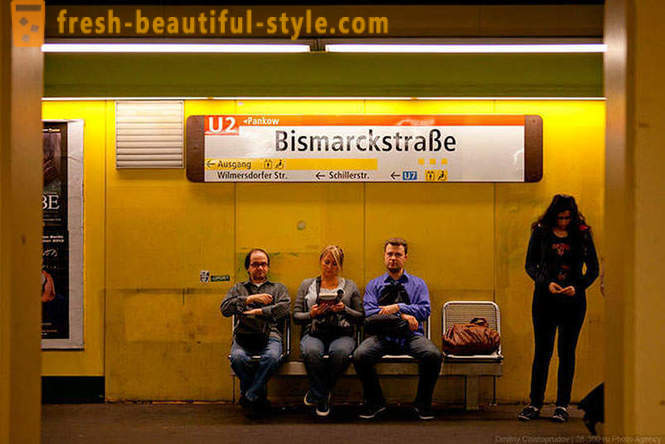
Most of the Berlin underground tunnels - shallow. In general, it is convenient - on the bottom photograph shows the station platform, that is, the depth is comparable to common underground passage. On the left in the photograph small building - a lift. I tested more than once - is working properly. Despite the shallow, during the Second World War, many stations were used as air-raid shelters, but Allied bombing damaged or destroyed a vast portion of the subway.
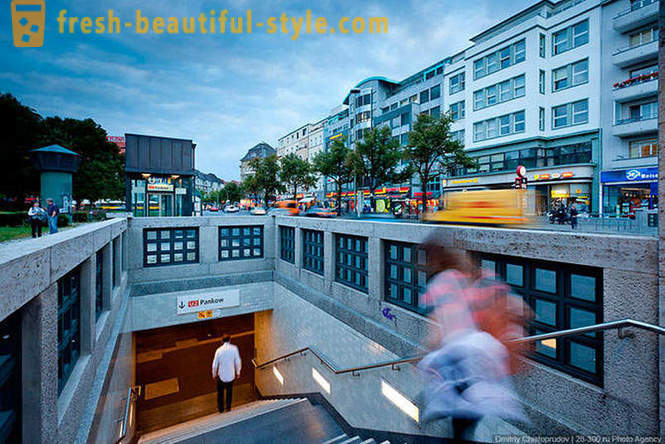
At the beginning of the construction of the Berlin Wall, August 13, 1961 the two lines of the Berlin Underground were closed. Seven stations were closed on the U6 line and eight stations on the U8 line due to the fact that these lines came from the western sector in the West through the eastern part. It was decided not to break the line of the western metro and only close the station, located in the eastern sector. The only exception is the station "Friedrichstrasse", which was organized by the PPC.
Here he writes blogger Ilya Varlamov: "At some stations, the first line in the days of walls were markets (flea and food). The wagons were opened "boutiques". Imagine the Moscow ring on which no trains, cars and visitors from Central Asia to sell dried apricots and dried apricots. Apokaliptichnenko? In Berlin, it lasted almost 28 years. "

At the stations and in the tunnels of the Berlin subway available mobile communications standard GSM, its infrastructure appeared in 1995 and became one of the first systems for mobile use in the subway.
Wagons series C2 and C4 are brought from the Soviet zone of occupation of Berlin, worked on Arbat-Pokrovskaya line of the Moscow Metro
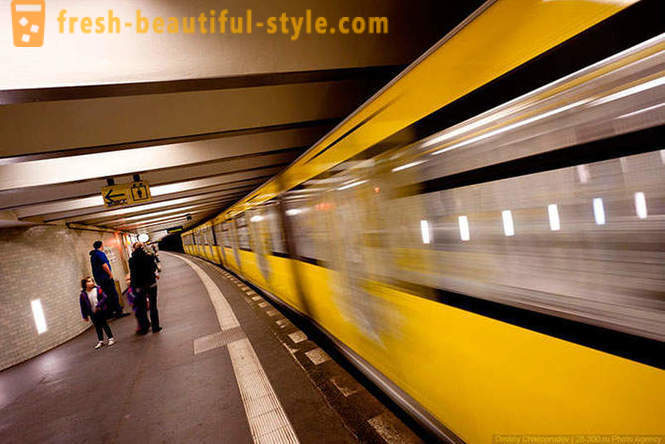
In Berlin subway uses two types of cars - on a narrow-profile lines U1, U2, U3, U4 and large-(on the lines U5, U6, U7, U8, U9). Both types of wagons, a standard gauge of 1435 mm, but differ in size. Both types of carriages using a direct current voltage of 750 volts.

On most major interchange station shops, banks, and fast food outlets.
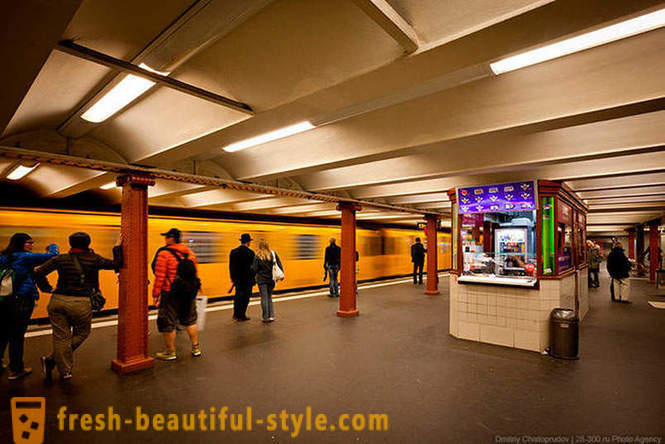
Land metro line is very compact. They walk along the major routes or, as in the photo, along the canal.
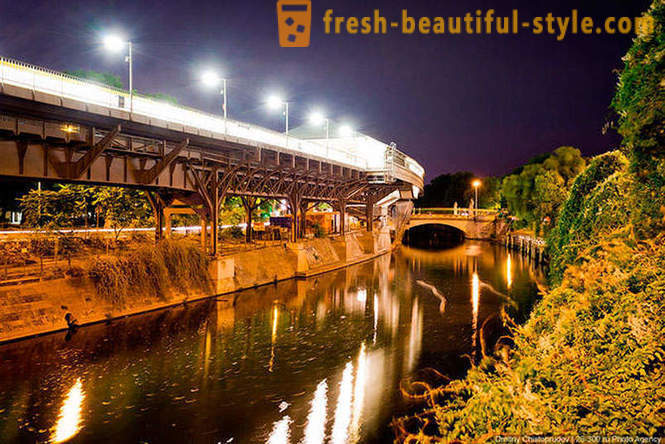
The station was built over the water, but even here there is an elevator and escalator for the elderly and disabled.
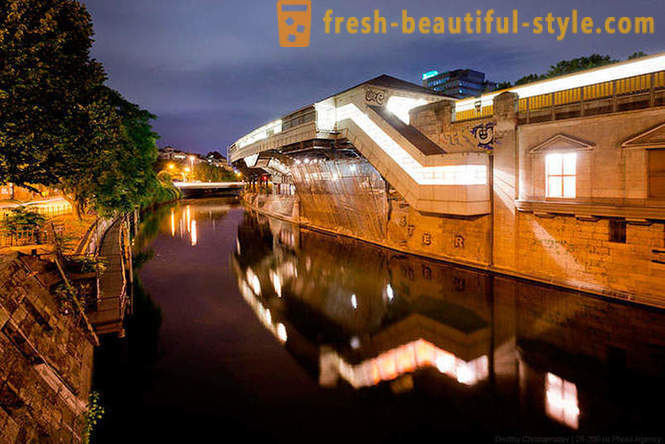
Berlin S-Bahn S-Bahn
These trains of its accessibility and infrastructure are more similar to the local underground than our Russian train. Most of the stations - land with an island platform and shelter from the rain. All stations have a booth attendant, who in the daytime announces routes and train departure.
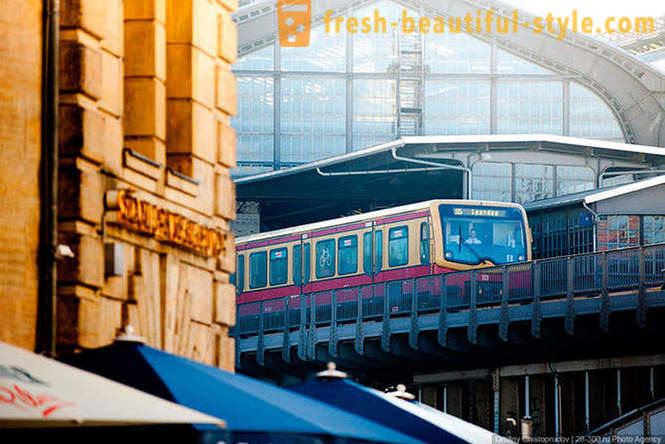
There are stations that are located directly above the main roads and fit harmoniously into the urban landscape. The length of the railway network of the S-Bahn - 331 km, is 165 stations.
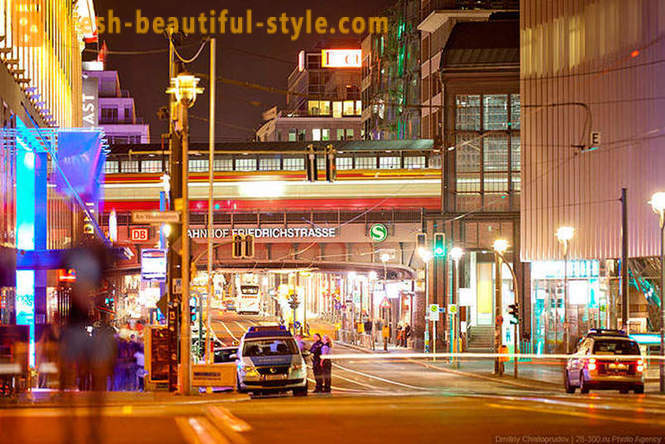
All the stations have the train schedule, ticket vending machines, punches, map of the city or district, circuit lines of the S- and U-Bahn.

S-Bahn Train wider and more spacious than the U-Bahn. Next to the driver's cab there is an area for bicycles. If trains are operating normally, the place lacks everything, including cyclists (side seats folded). number of people willing to ride a bicycle on the train sharply in rainy weather. And if at that time the movement is loaded, it is best not to go with the bike in the crowd - European tolerance quickly gives way to the elbows and kicks.
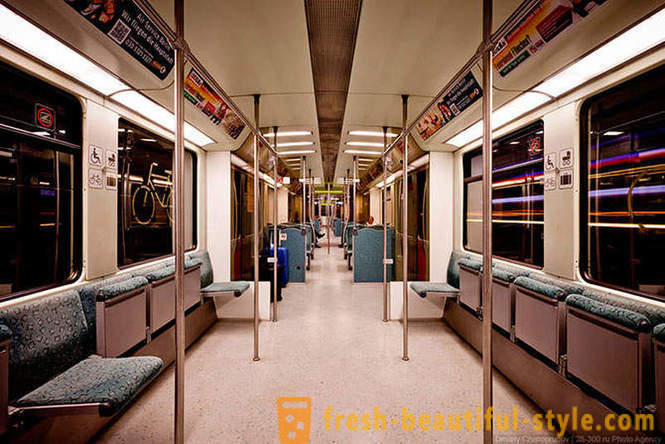
The average distance between the stations and the average train speed is higher than in the underground. range of motion, ease of use and infrastructure is comparable to the subway, so the U-Bahn and S-Bahn is best regarded as a common network of railway transport in Berlin.
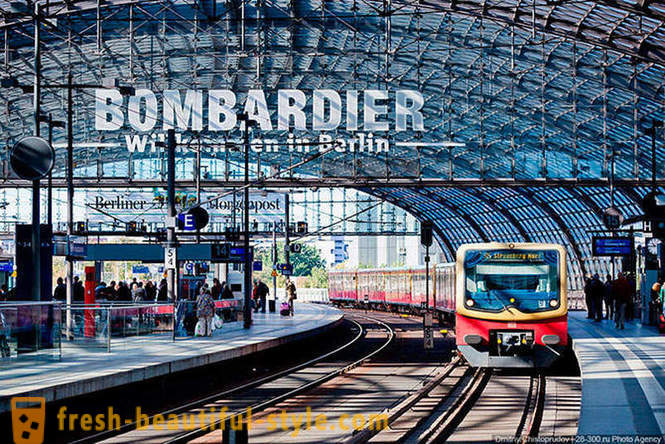
A network of regional trains serving the small and medium distance
A few words on commuter trains RE (RegionalExpress). This type of transport is very similar to our usual train. Part of the stations are located in the city, some of them combined with the S-Bahn stations and have a transition into the subway.
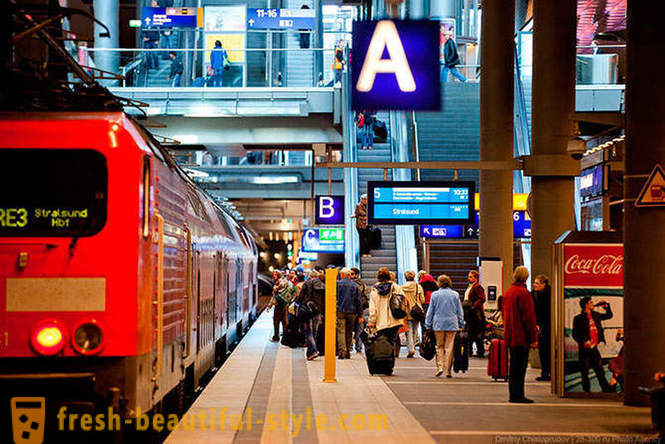
These trains run on schedule. The speed is much higher, stopping often.
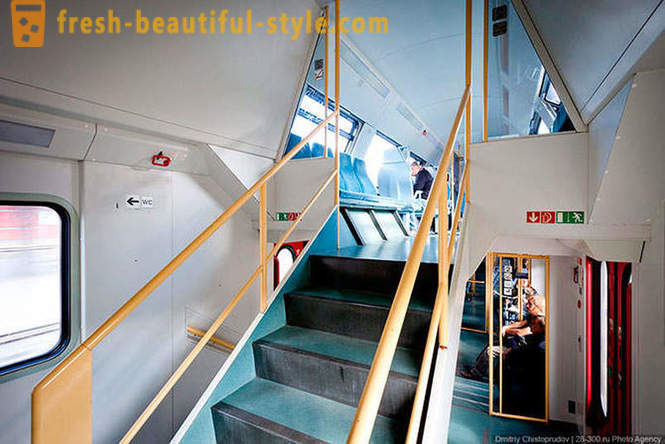
On the second floor of the passenger is usually larger than the first.

There is even a chair for children, so cute! On the left in the frame - an urn.
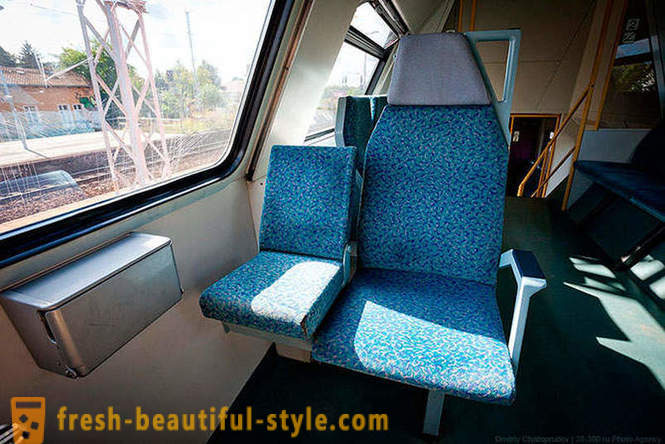
Train tickets can be bought at the station or from the conductor. The 30-minute trip to Podberline cost me 4 euros.
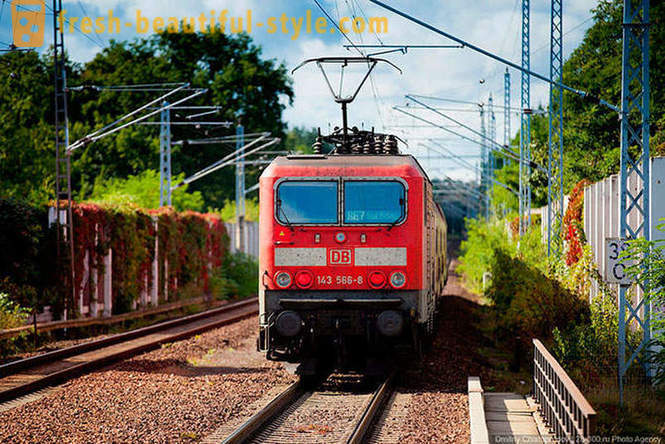
Cycling
Let the bike and can not be considered a public urban transport (probably), but write about it a must! Early in the morning I rode the tram and us five stops riding cyclist. Not on bike path, but right on the tram tracks. It went so stops 5-6, but then could not resist, and overtook the tram ...
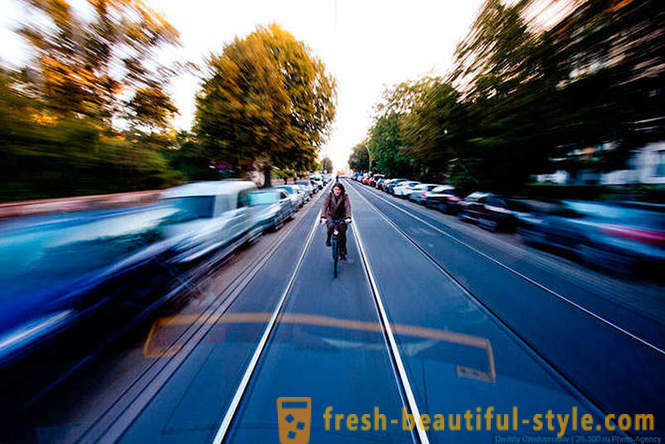
In Berlin, not just to take pictures of the street, so the shot did not hit a single bike.
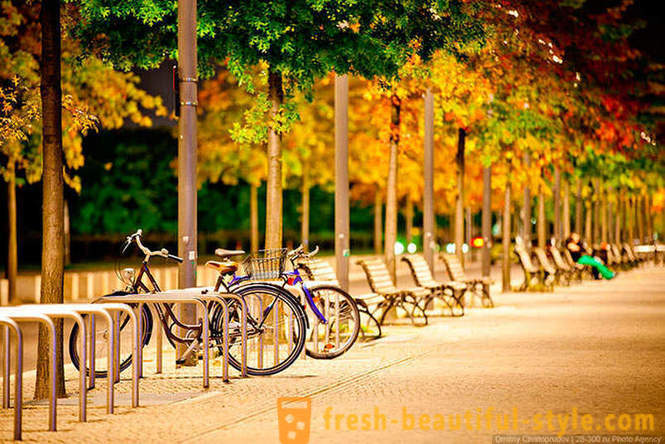
I have not been to Amsterdam, Berlin veloinfrastruktura therefore seems ideal.

The typical Berlin morning. Crossroads. The number of cyclists and pedestrians alike. Motorists complain about their two-wheeled brethren smaller that those often do not follow the rules of the road. The way it is.

Bicycles everywhere. If Moscow is decrepit Gazelle with a six-meter billboard in Berlin is a promotional bike.
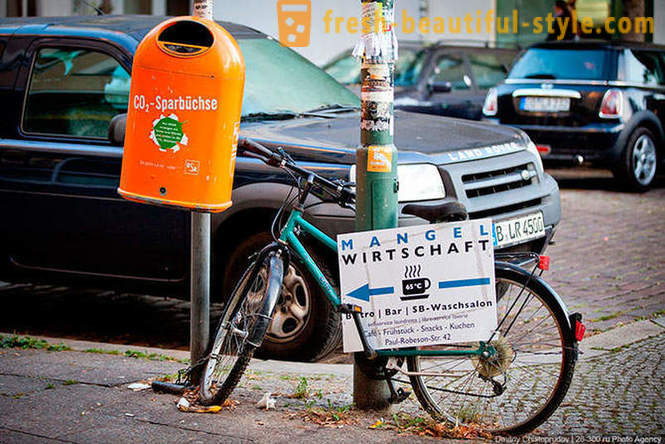
If the courts of Moscow, you can stumble upon an abandoned clunker, but on the streets of Berlin can be found abandoned bicycles.
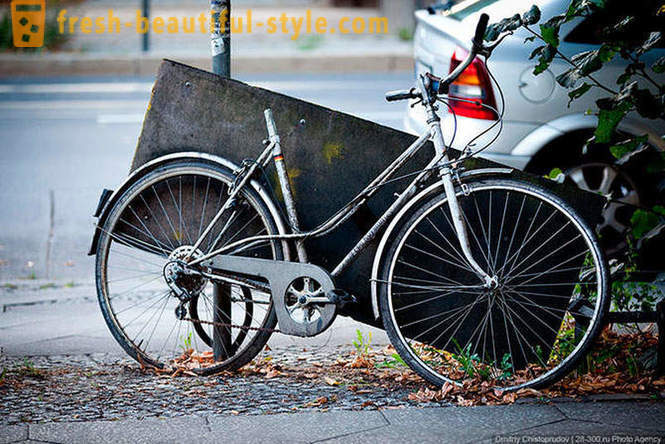
A large number of people come to the nearest tration S-Bahn or U-Bahn, which leave their bicycles in the parking lot and transplanted to the train.
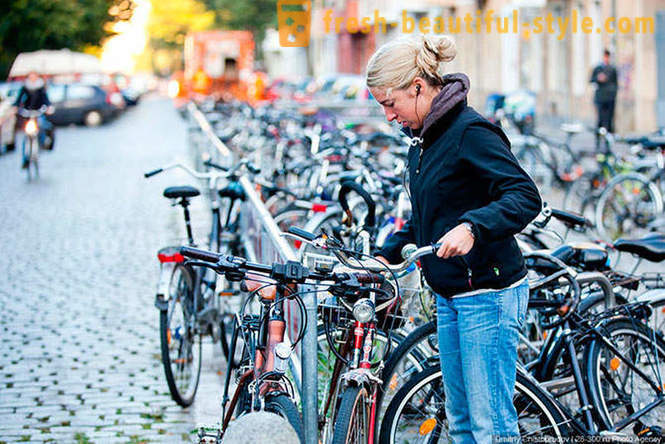
I believe that Moscow will ever be as well!
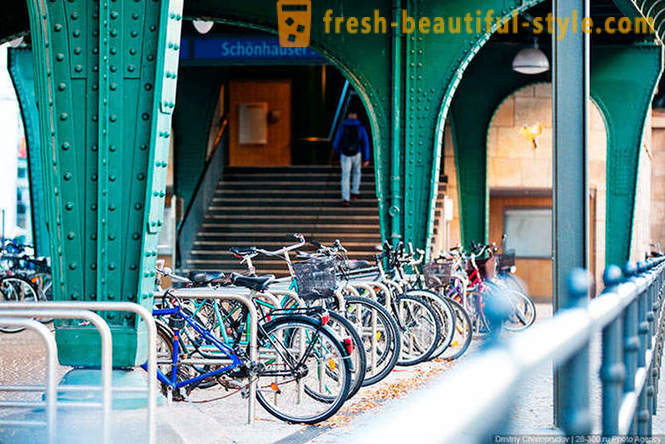
move around the city by bike is as comfortable as any other form of transport.
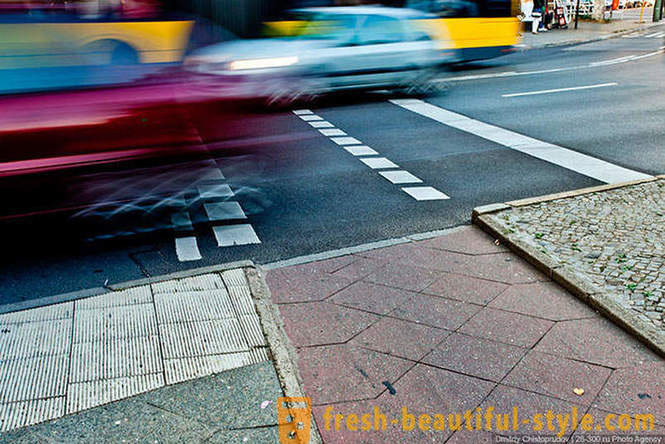
I also experienced it all on himself, taking a bicycle (24 euros for two days).
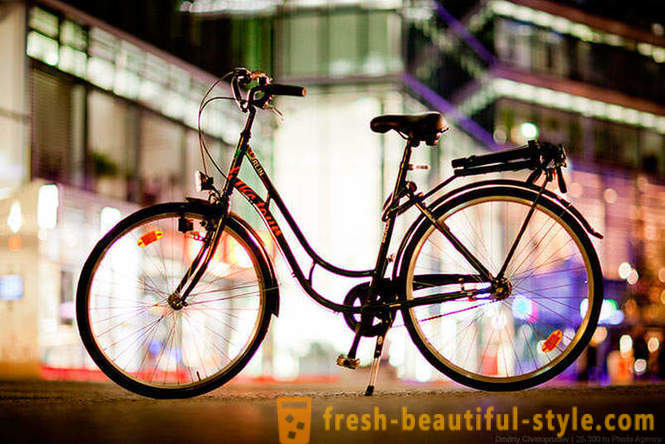
Output:
The public transport system in Berlin - while the best of all that I have met. An extensive network of bus and rail lines serves approximately four million passengers, and plays a crucial role in the life of the city. Perhaps that is why in the Berlin half of the families does not own a car, and somehow not steamed.













































